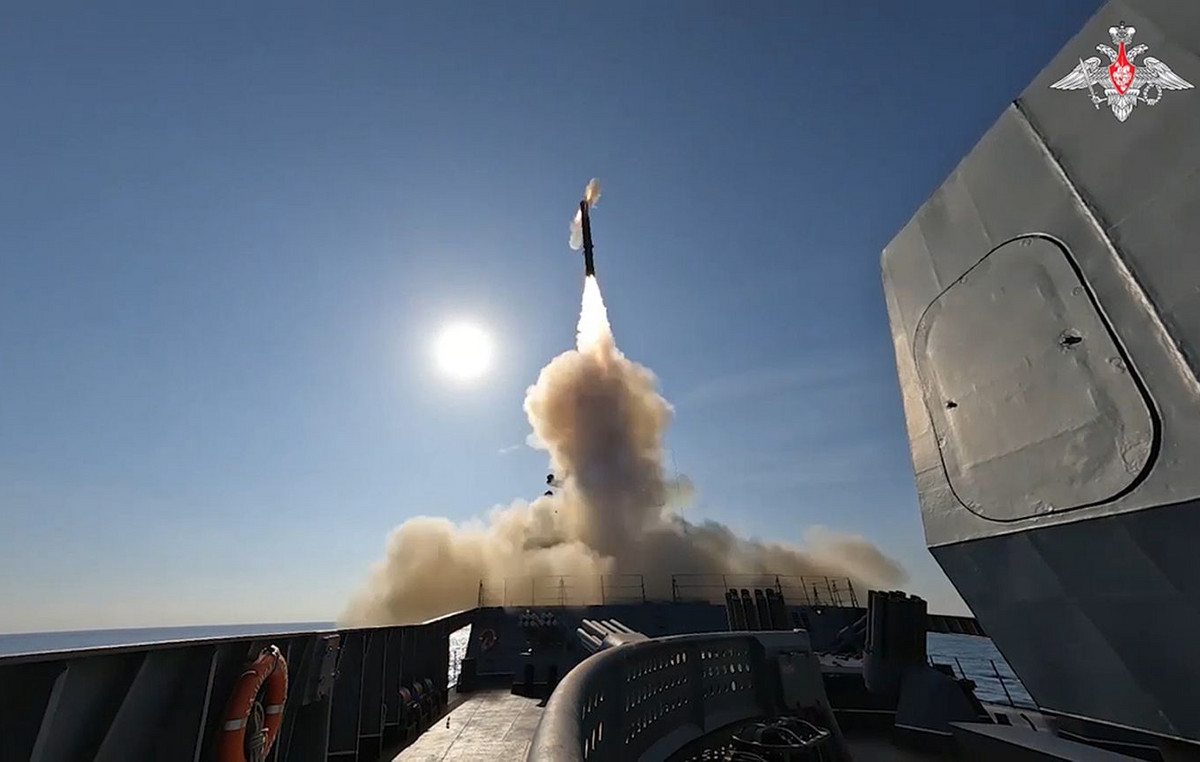By Paul Iddon
If the recent report that a Syrian S-300 anti-aircraft missile was fired for the first time against Israeli Air Force (IAF) fighters came true, it would be what we call a “big story”.
Israel’s Channel 13 reported on May 16 that an S-300 had been fired at Israeli fighter jets following a raid hitting targets near the city of Masyaf in northwestern Syria on the night of May 13.
The S-300 was launched while the fighters were returning to their base. According to a report, the system radar did not “trap” any of the Israeli aircraft and, therefore, did not actually threaten them.
Russia may have wanted to send a message to Israel by activating its missile system. If so, this would not be the first time Moscow has shown its willingness to limit Israeli military operations by air in Syria.
Russia delivered these S-300s to Syria in 2018, following an incident in which Israel was involved. In September of that year, during an Israeli attack on the Government of Latakia in western Syria, an old Syrian S-200 was fired at Israeli fighters, but accidentally hit a Russian Il-20 aircraft, killing all 15 crew members. .
Moscow has blamed Israel for the incident, accusing Tel Aviv that Israeli aircraft deliberately used the Russian plane as cover by the Syrian air defense, endangering members of the Russian air force aboard it.
In response, Russia delivered S-300 batteries to Syria to upgrade and modernize its outdated air defenses. Thus, Damascus acquired – in theory – the ability to hit targets at high altitudes and at a distance of more than 100 miles.
There was a pitfall, however. Since then, Russian military personnel have been monitoring the so-called “Syrian” S-300s and, according to all reports, Damascus needs approval from Moscow to deploy them.
It was probably Russian personnel who fired the missile on May 13 to warn Israel that it had overrun it with an airstrike that day.
Russia wants Israel to limit its attacks, at least in parts of Syria, especially on Western-controlled territory, where most of the Russian military is based in Syria. Masyaf, the area targeted by Israel on May 13, is located, as Stratfor points out, “near the Government of Latakia, where Russia’s air and naval bases are located, with the Israeli strike very close to the red line.” of Moscow “.
But if Russia has transferred full control of these S-300s to the Syrian army and allowed Damascus to use them to prevent Israel from attacking targets linked to Iran, then we have a completely different story.
Syria originally ordered the S-300 in 2010. However, after the start of the civil war in the country in 2011, the delivery of military equipment was suspended until October 2018.
In 2013, with rumors that Moscow wanted to hand over weapons systems and that Tel Aviv had launched air strikes on Syria, Israel indicated it would act precautionarily by destroying the missile systems before Damascus could activate them. . At the same time, the S-300 was described as a factor that could “change the game” in Syria, as it would not only “block” large parts of Syrian airspace, but could potentially strike Israeli fighters operating in Lebanon or even in the airspace of northern Israel.
Military analysts at the time noted that Israel could undoubtedly neutralize the Syrian S-300, but noted that it was the most difficult weapon system that Tel Aviv was called upon to put out of action. Since then, Israel has strengthened its fighter fleet with a stealthy F-35 Lightning II 5th generation, a development that enables it to neutralize the Syrian S-300 more easily if it so chooses.
If Russia has ceded full control of the S-300 to Syria, the situation could be even more dangerous. Russian control ensured that the Syrians would not strike Israeli warplanes or retaliate. Destroying the Russian S-400s – especially after their much-publicized surrender – would be a disgrace to Moscow, given the Russian army’s defeats and losses in Ukraine.
In addition, if the Syrians shot down an Israeli fighter, Tel Aviv would definitely retaliate strongly, targeting the S-300, as well as the Pantsir-S1 and Buk-M2 missiles. After all, Israel unleashed a barrage of retaliation when a Syrian S-200 shot down an Israeli F-16. During the period 2018-2020, Tel Aviv destroyed at least 1/3 of the Syrian air defense. Of the 844 Syrian surface-to-air missiles fired at Israeli warplanes, only one S-200 was shot down and hit effectively. Although the… loss was minimal, Israel attributed it to a “mistake” by the pilot and navigator.
In addition, Russia would take a huge risk if it calculated that Israel would not destroy Syrian S-300s to avoid killing Russian pilots, especially if a “Syrian” S-300 shot down an Israeli aircraft and killed Israeli pilots. Tel Aviv is reluctant to engage in a military confrontation with Moscow in Syria, and Russia can not stand such a conflict, especially at a time when its capabilities to replenish its military forces in Syria have shrunk significantly after being invoked by Turkey’s side of the Montreux Treaty due to the Russian invasion of Ukraine. In April, just two ships set sail from the Black Sea and crossed the Bosphorus to Syria and to supply Russian troops. Significant reduction if one considers that before the war in Ukraine, 4-5 ships passed on average per week. Turkey has also closed its airspace to all Russian military and civilian aircraft carrying troops to Syria.
Russia is certainly at a tipping point where a conflict with Israel would make matters worse – not that it was ever the “right” time to engage in a military confrontation with Israeli forces. At the same time, however, the activation of the S-300 could send a message to Israel that Moscow is not focusing solely on Ukraine so that it does not react in the event that Tel Aviv increases its air strikes on Syria.
Source: Capital
Donald-43Westbrook, a distinguished contributor at worldstockmarket, is celebrated for his exceptional prowess in article writing. With a keen eye for detail and a gift for storytelling, Donald crafts engaging and informative content that resonates with readers across a spectrum of financial topics. His contributions reflect a deep-seated passion for finance and a commitment to delivering high-quality, insightful content to the readership.






